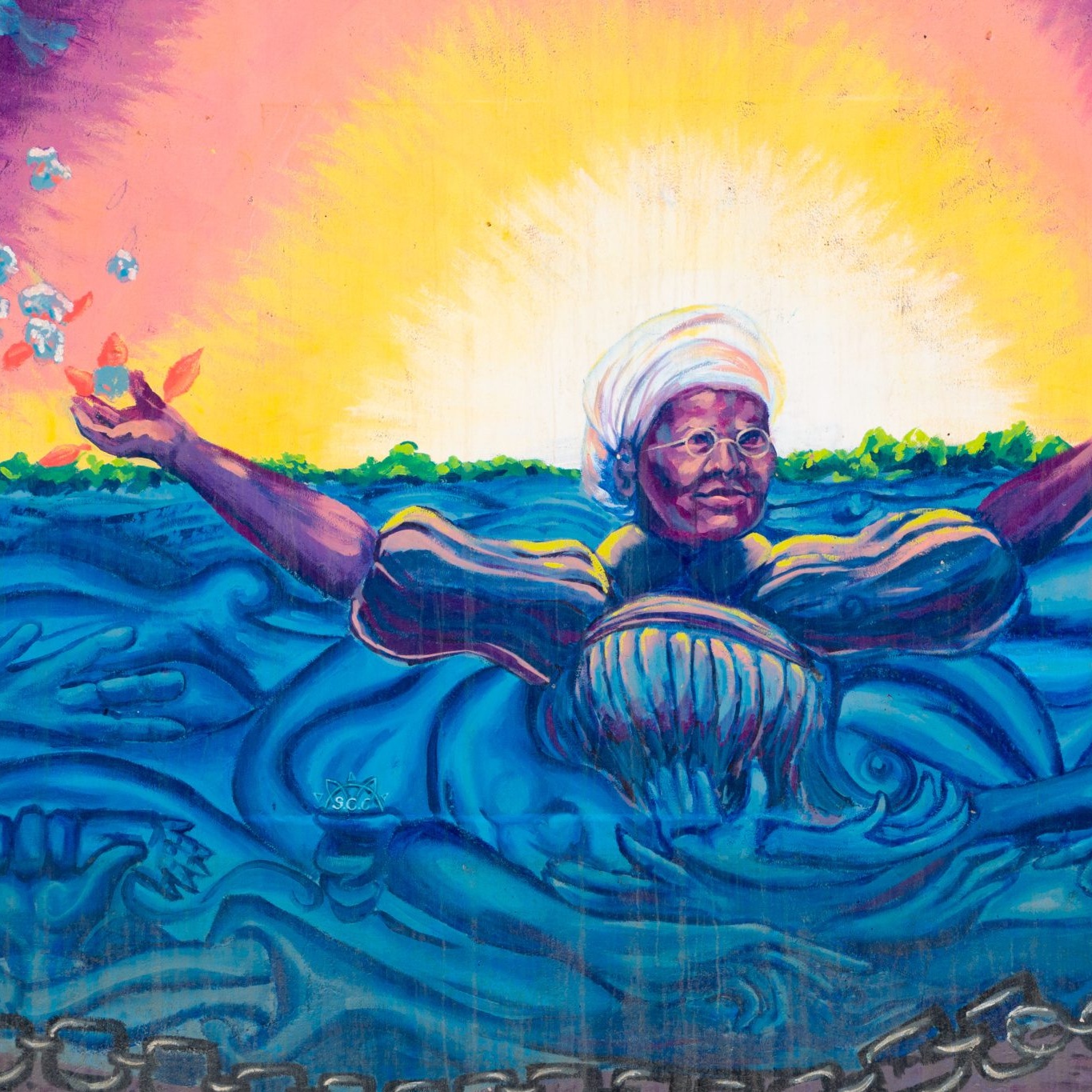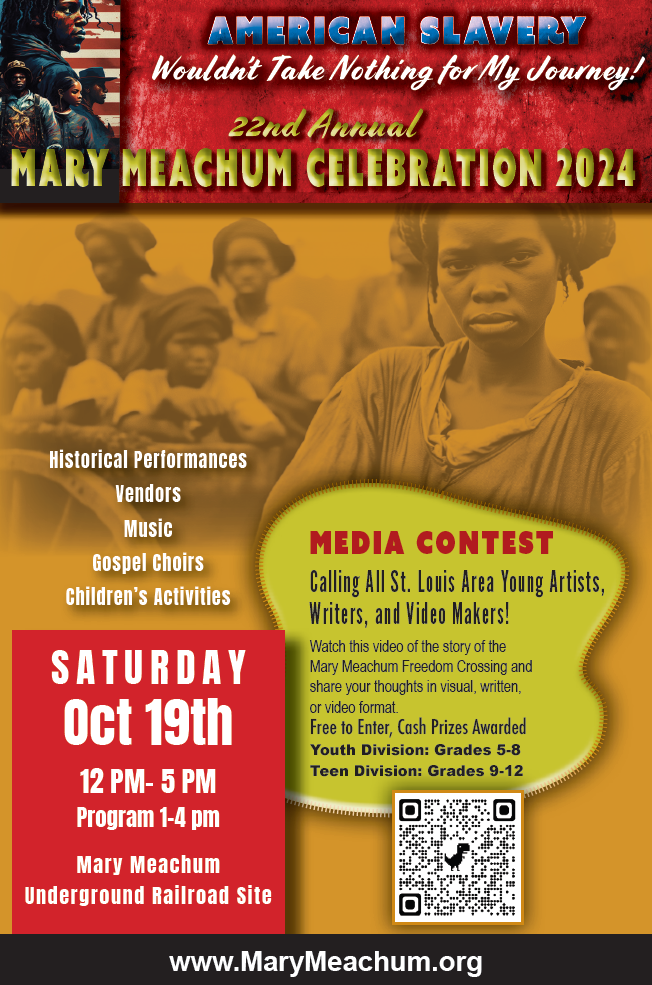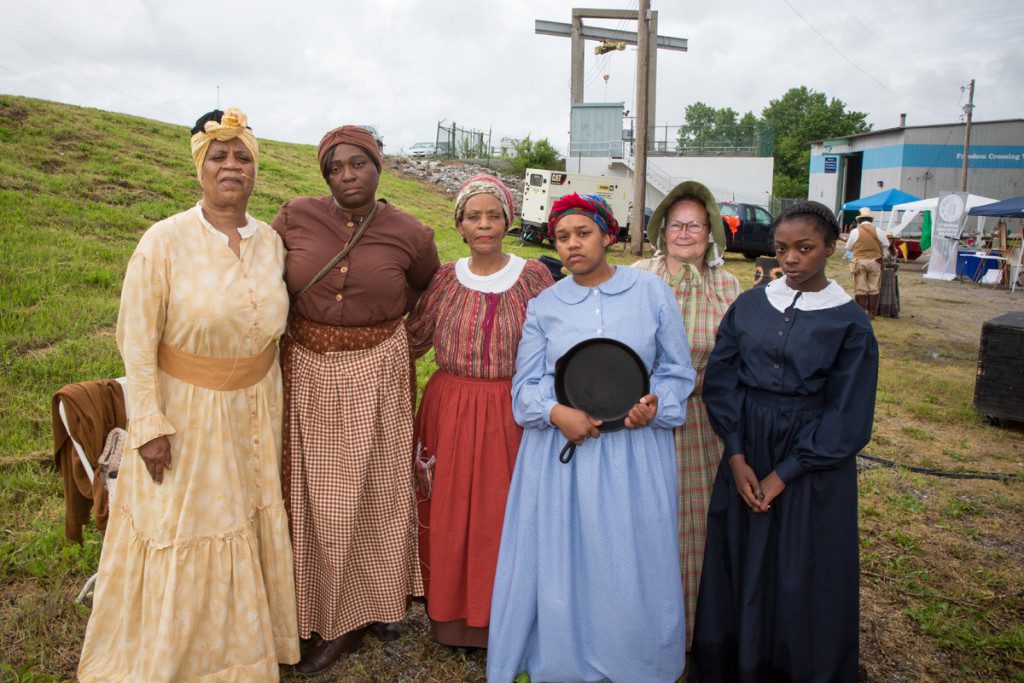
Who is Mary Meachum?
Mary Meachum (1801–1869) and her husband, Reverend John Berry Meachum, were American abolitionists who dedicated their lives to educating and freeing enslaved people. On the night of May 21, 1855, a small group of enslaved people met at Mary Meachum’s home downtown as the waypoint to start their journey to the river to attempt an escape in the area that is now part of the Mississippi Greenway: Riverfront Trail north of the Merchant’s bridge. They intended to cross the Mississippi River to Illinois where slavery was outlawed. However, enslavers and law enforcement officials caught at least five of the enslaved people and arrested Mary for her participation in the plot. She was charged in criminal court for helping the “fugitives” escape. In 2001, the National Park Service recognized the site as part of the Underground Railroad Network to Freedom.
To learn more about Mary Meachum, check out the following resources:
Where is the Mary Meachum Site?
The site is located on the Mississippi Greenway. To bike or walk to the site, you can park in North Riverfront Park and ride south on the greenway. To drive there, take Highway 70 to Adelaide Avenue: Head east toward river; south on Hall to Prairie; left (east) on Prairie to site & parking, free shuttle the rest of the way. You can use the address 28 E. Grand Ave.
American Slavery: Wouldn’t Take Nothing for My Journey
Youth Media Contest
Calling All St. Louis Area Young Artists, Writers, and Video Makers!
Watch the video above of the story of the Mary Meachum Freedom Crossing and share your thoughts in visual, written, or video format. The Mary Meachum Underground Railroad site has been educating the public about the lives of the enslaved in St. Louis for over 20 years. The site located along the Mississippi River was the starting point for a slave escape that happened in 1855. Now we want to hear from students. The journey from slavery to the present has been a complex one that was marked with courage, determination and resistance. It has been an ongoing quest for empowerment and equality. Even during enslavement, creative expression and a unique cultural identity emerged. Black joy has always been able to be expressed through song, dance and storytelling. These have been critical to the preservation of who our ancestors were and what they wanted us to remember. We encourage you to create something about what slavery and freedom mean to you today. Examples of youth media contest entry types include the following:
Storytelling. Share with us a family story that has been handed down about an ancestor. What would dreams of freedom have looked like to an enslaved child or teenager?
Rap Song. Create a rap about enslavement or freedom, your neighborhood, your joy. Rap was about how hard life was, what it took to survive. Slavery to the present has been the hard times that rap often portrays.
Photography. A photo taken by you of something that you can relate to slavery, freedom or nature. The enslaved lived very close to nature and they knew a lot about plants, animals and the outdoors. Farming and gardening were a source of pride.
Painting. Create an art piece of the Mary Meachum site, where the freedom seekers stood, or if you could draw of paint the idea of freedom, what would that look like? Would it be colorful, would it look like the wind blowing leaves around? What would freedom look like?
Dance. Black music and dance has often been the platform to say what they wanted to say. Hip Hop was used as form of expression and address the inner lives of people and the struggles they faced. Break dancing and the style of dancing today came out of Hip Hop.
Video documentary. Creating a video with your phone is easier now more than ever. Interview olderpeople about how far back they can go with their family history. Did they have ancestors who were enslaved? Did they come here from the South?
Research. Tell us about a person who worked with the Underground Railroad or helped freedom seekers as they escaped. This could be someone who may not be as famous a Harriet Tubman or Fredrick Douglass and you think their story needs to be told just like Mary Meachum.
Book Review. If you have read a really good book about Slavery or the Underground Railroad. Do a book report. Talk about the story, the characters and why you would recommend it to others.
Free to Enter, Cash Prizes Awarded
Youth Division: Grades 5-8
Teen Division: Grades 9-12
Winners Announced at the 2024 Mary Meachum Freedom Crossing Celebration on Saturday, October 19, 2024
Submission Deadline: Friday, September 20, 2024
Written submission maximum length is 500 words. Visual submission maximum file size is 1MB. For video submissions, submit a link to where the video can be viewed online (YouTube, Vimeo, etc.).
2024 Mary Meachum Media Contest

Join us for the 22nd Annual Mary Meachum Freedom Crossing Celebration on Saturday, October 19, 2024. The program includes historical performances, vendors, music, gospel choirs, and children’s activities and will take place from 1-4pm.
Interested in being a vendor or exhibitor at the 22nd Annual Mary Meachum Freedom Crossing Celebration on Saturday, October 19, 2024? Fill out the form below to register for a booth space.
2024 Meachum Vendor and Outreach Booths

Subscribe for updates about the Mary Meachum site and celebrations
Past Celebrations
The 2023 event “Field Hollers to Hip Hop” celebrated the evolution of St. Louis’s Black music heritage.
The 2022 event brought hundreds of people together at the Mary Meachum Freedom Crossing site for the 20th anniversary of this celebration.
The 2021 virtual event highlights the stories of Black St. Louisans whose lives were intertwined with Missouri’s journey to statehood and the legalization of slavery in the state. In 1818, Missouri wanted to join the Union as a slave state. A compromise was struck, and the horror of slavery was once again expanded. There was no compromise for enslaved people. Join us to learn about and connect to our community’s past, present, and future. Watch the 2021 virtual event video here. Thank you to the 2021 sponsors Great Rivers Greenway and Missouri Division of Tourism for supporting bringing these important stories to life!
The 2020 event (virtual) focused on the struggles to pass the 15th Amendment giving Black men the right to vote, and the incredible violence that women had to endure for the right to vote with the passage of the 19th amendment. Check it out here.



